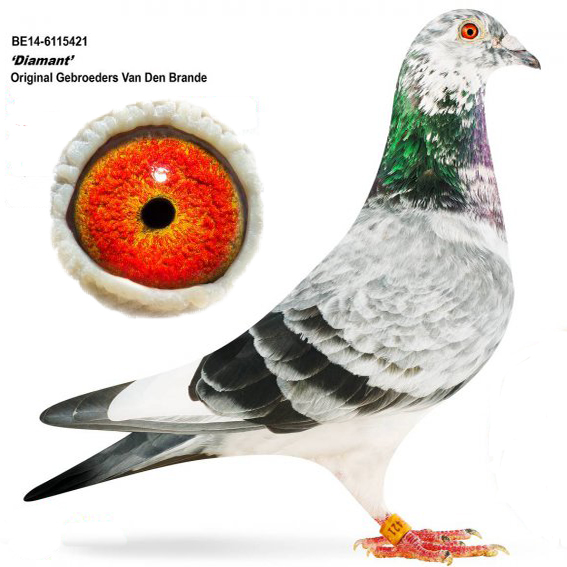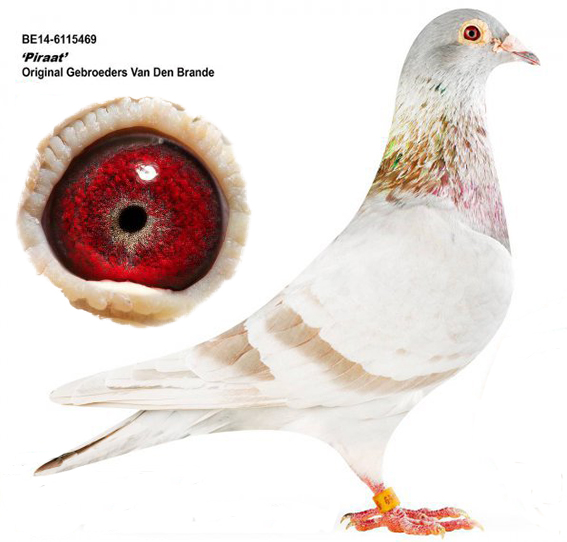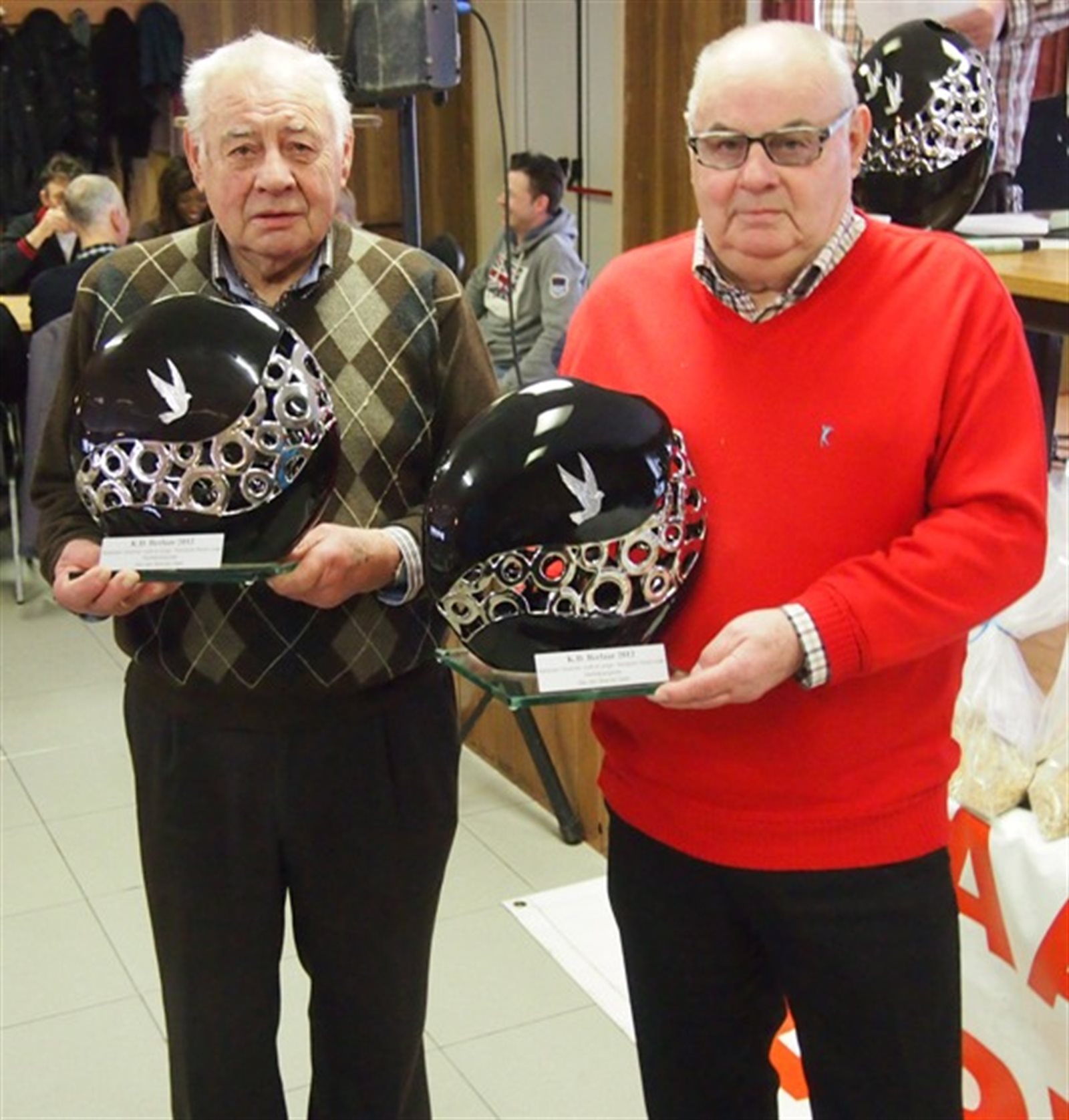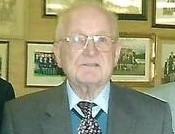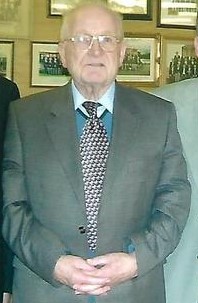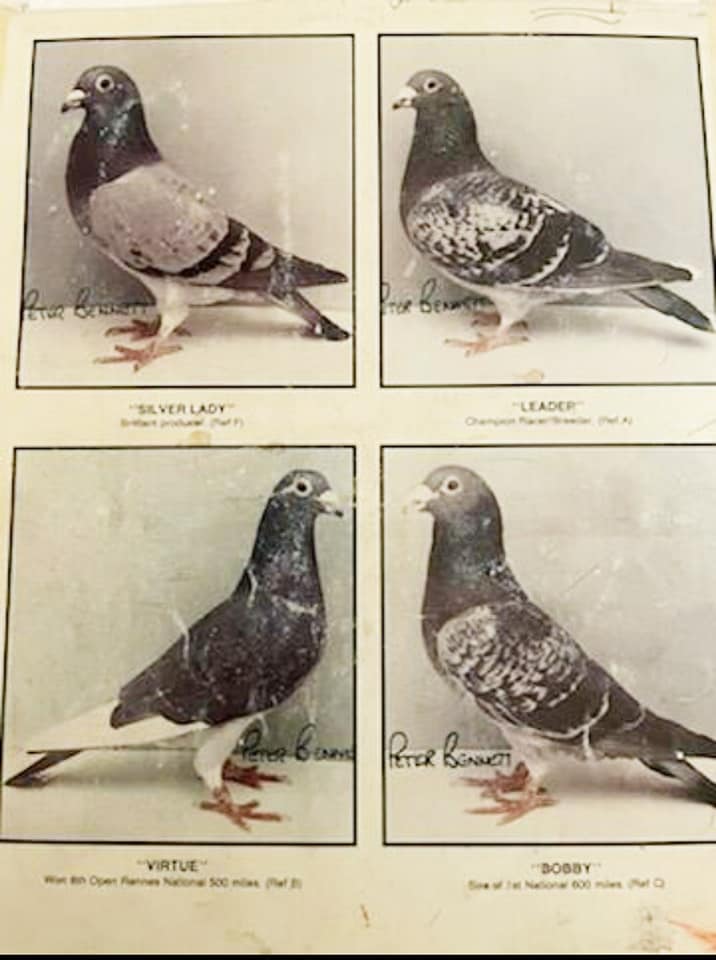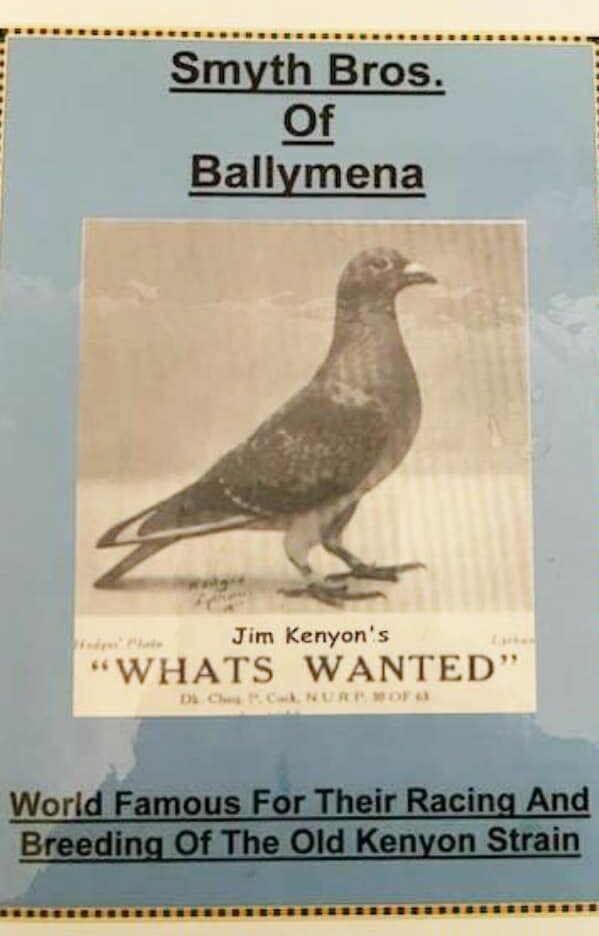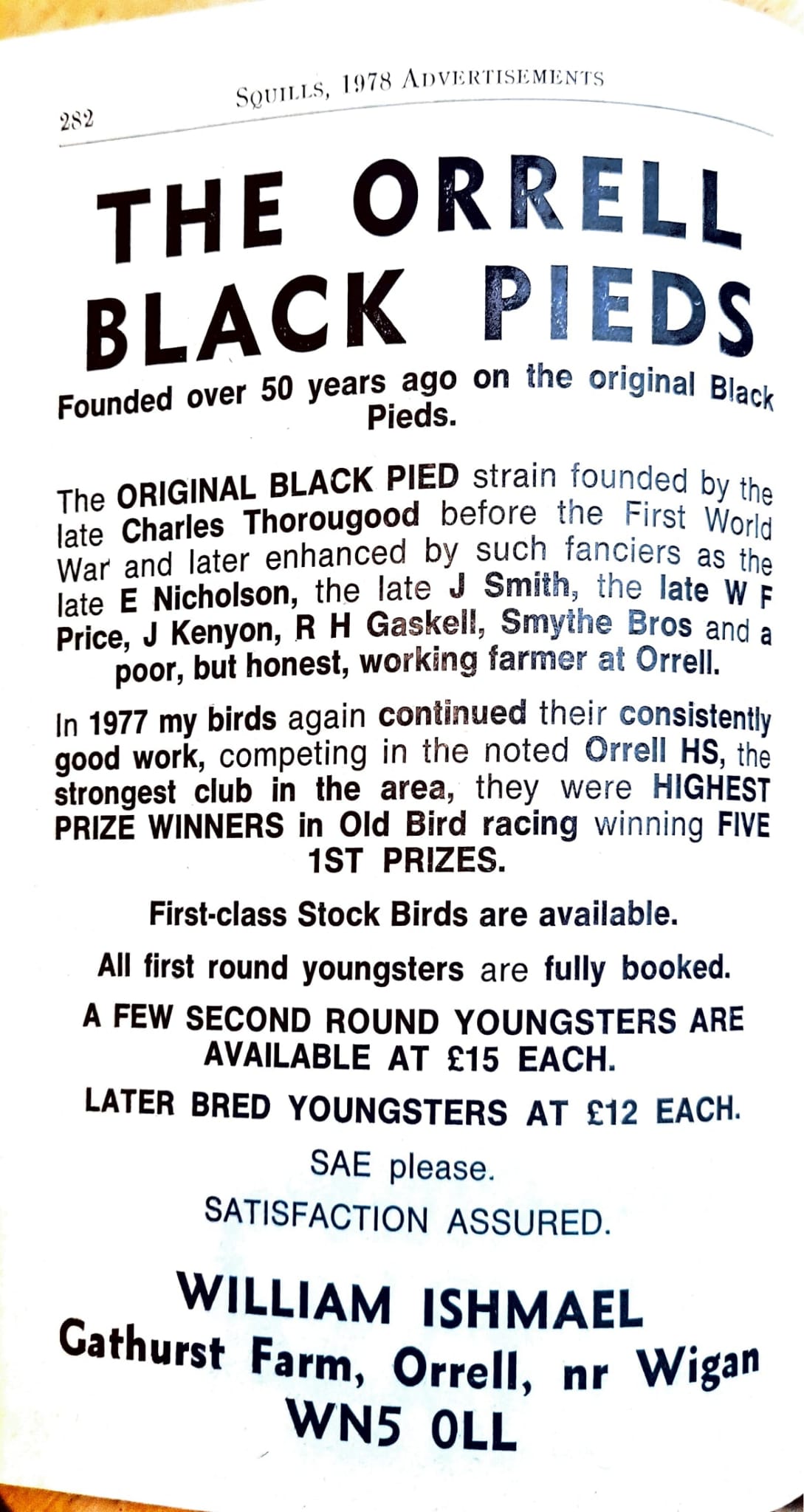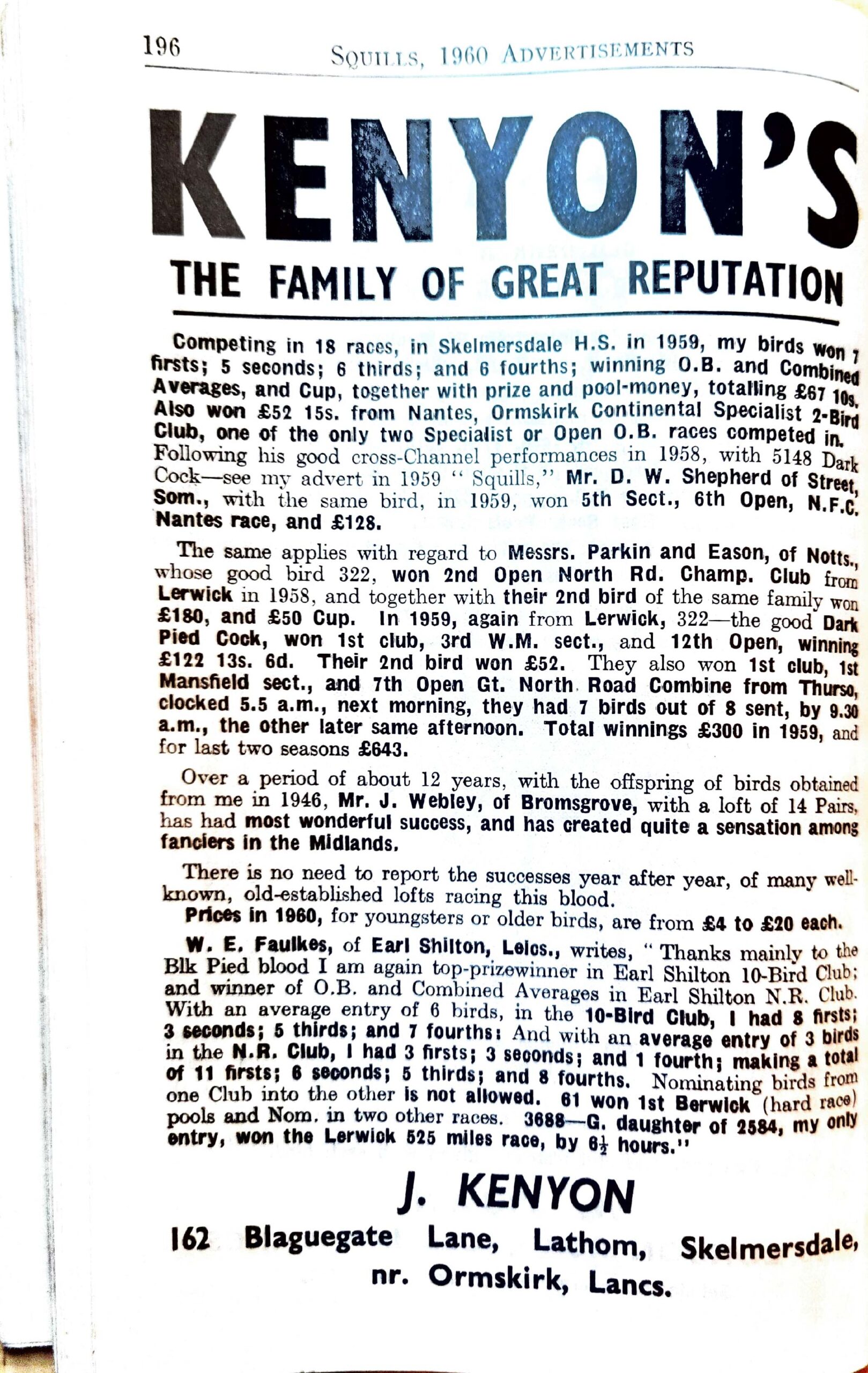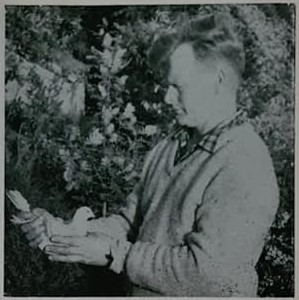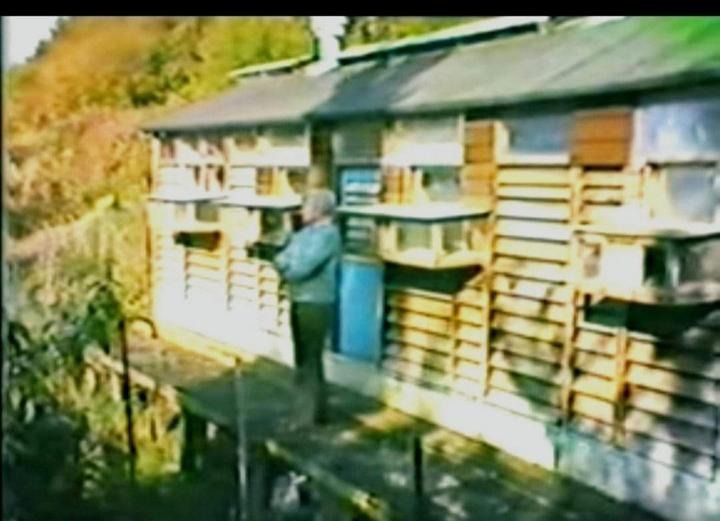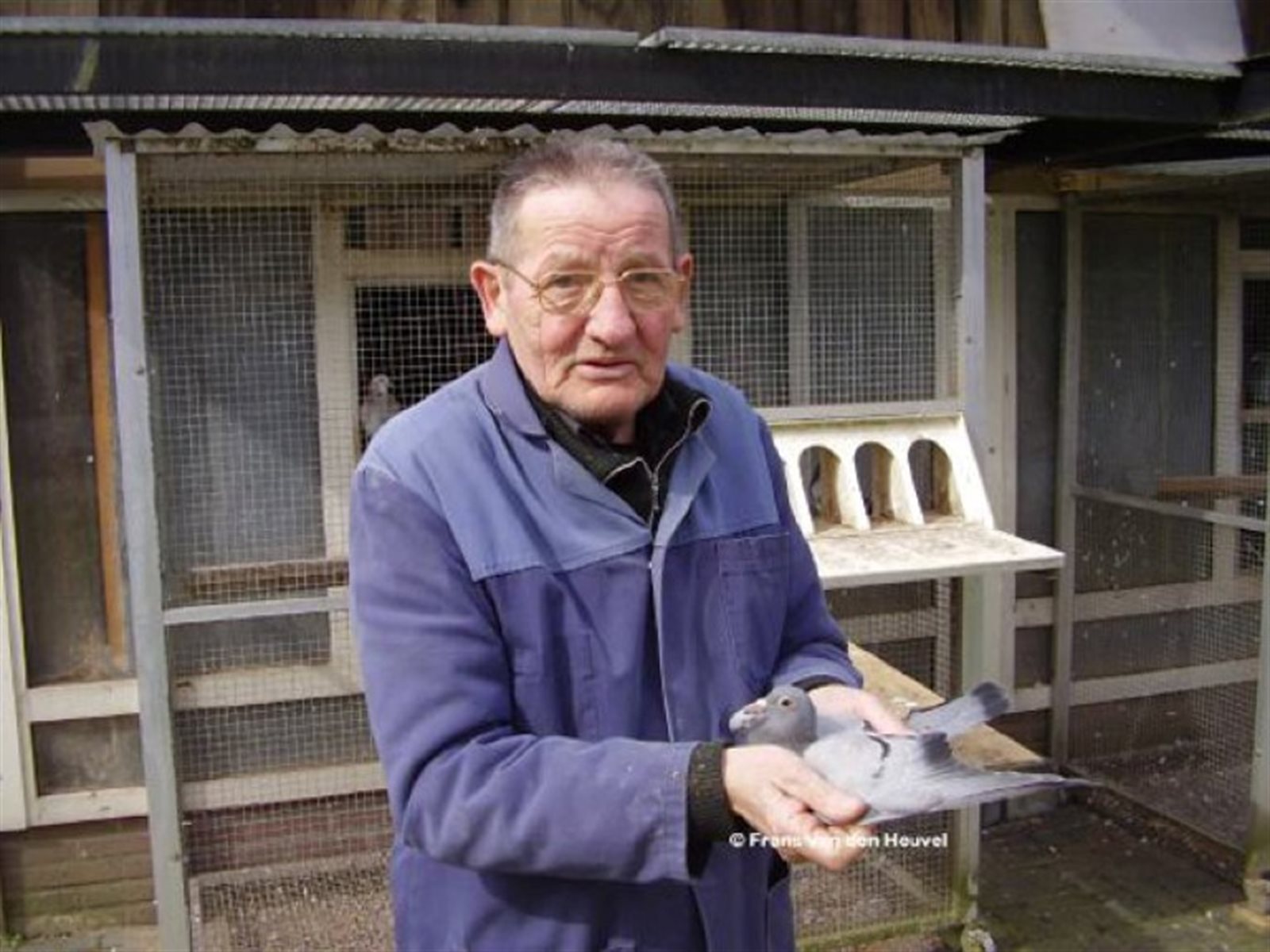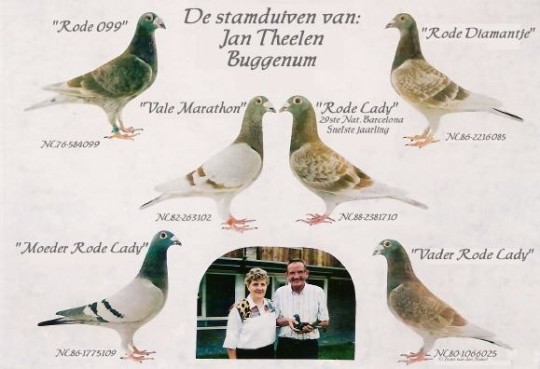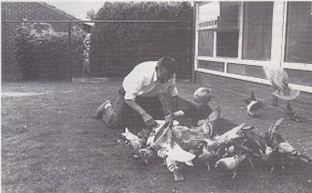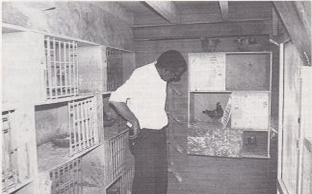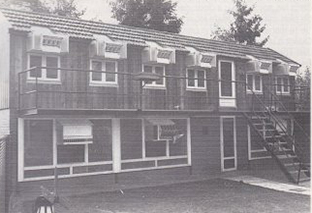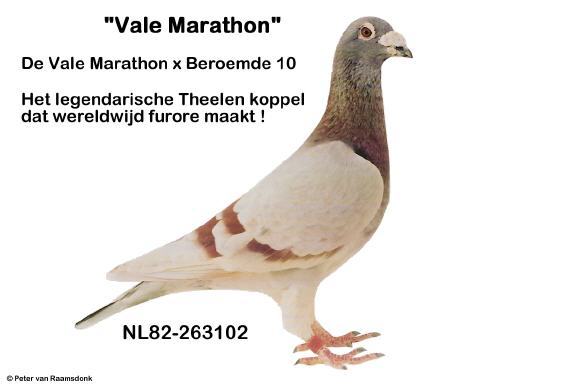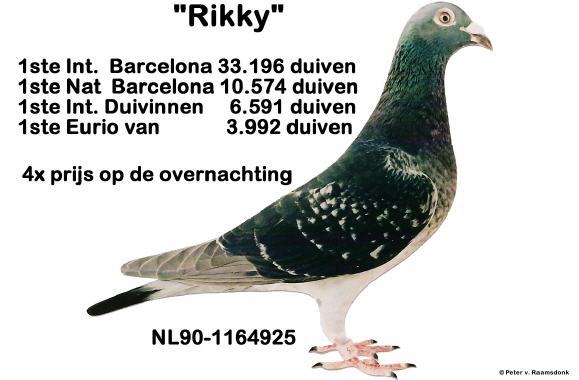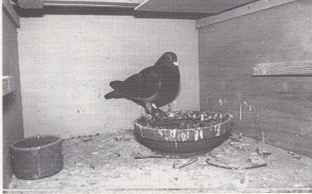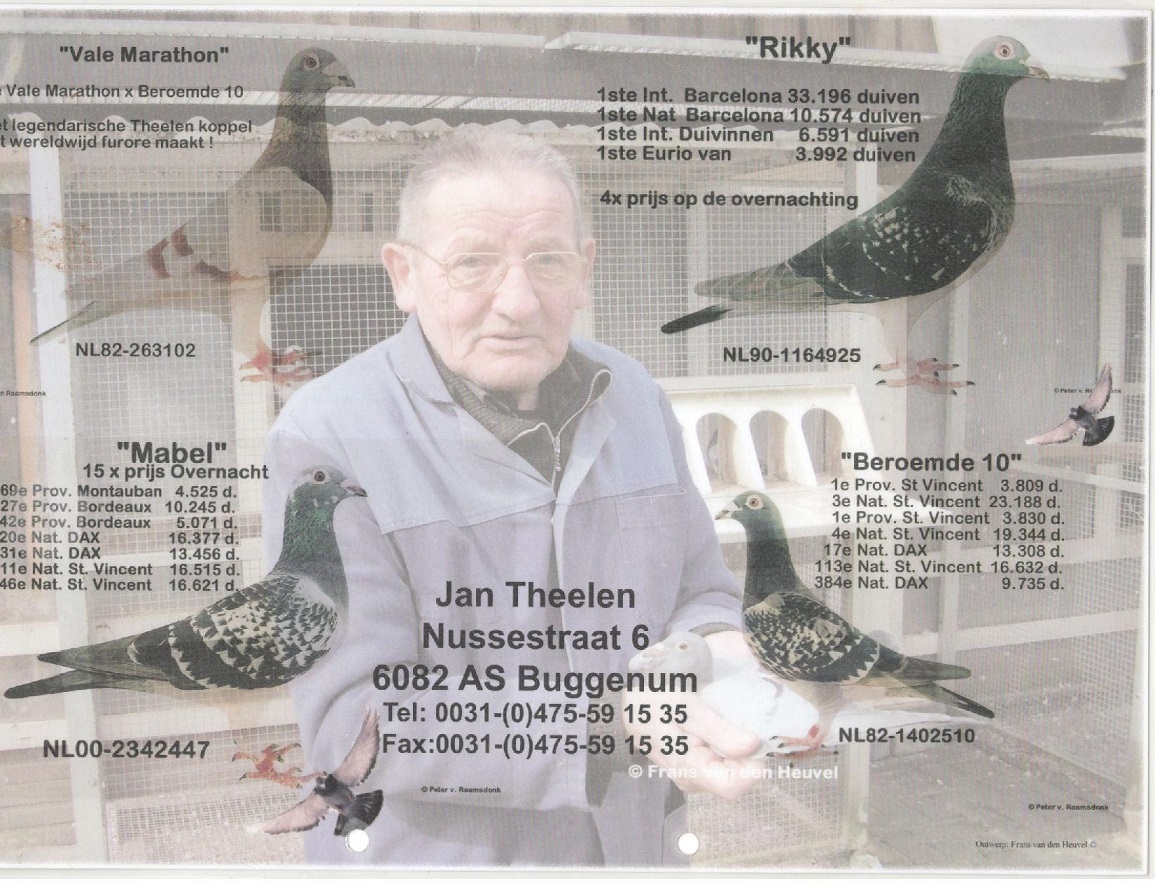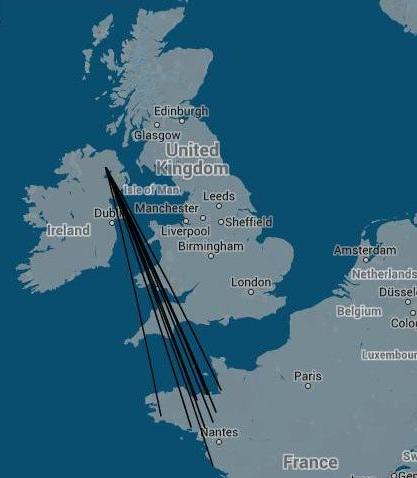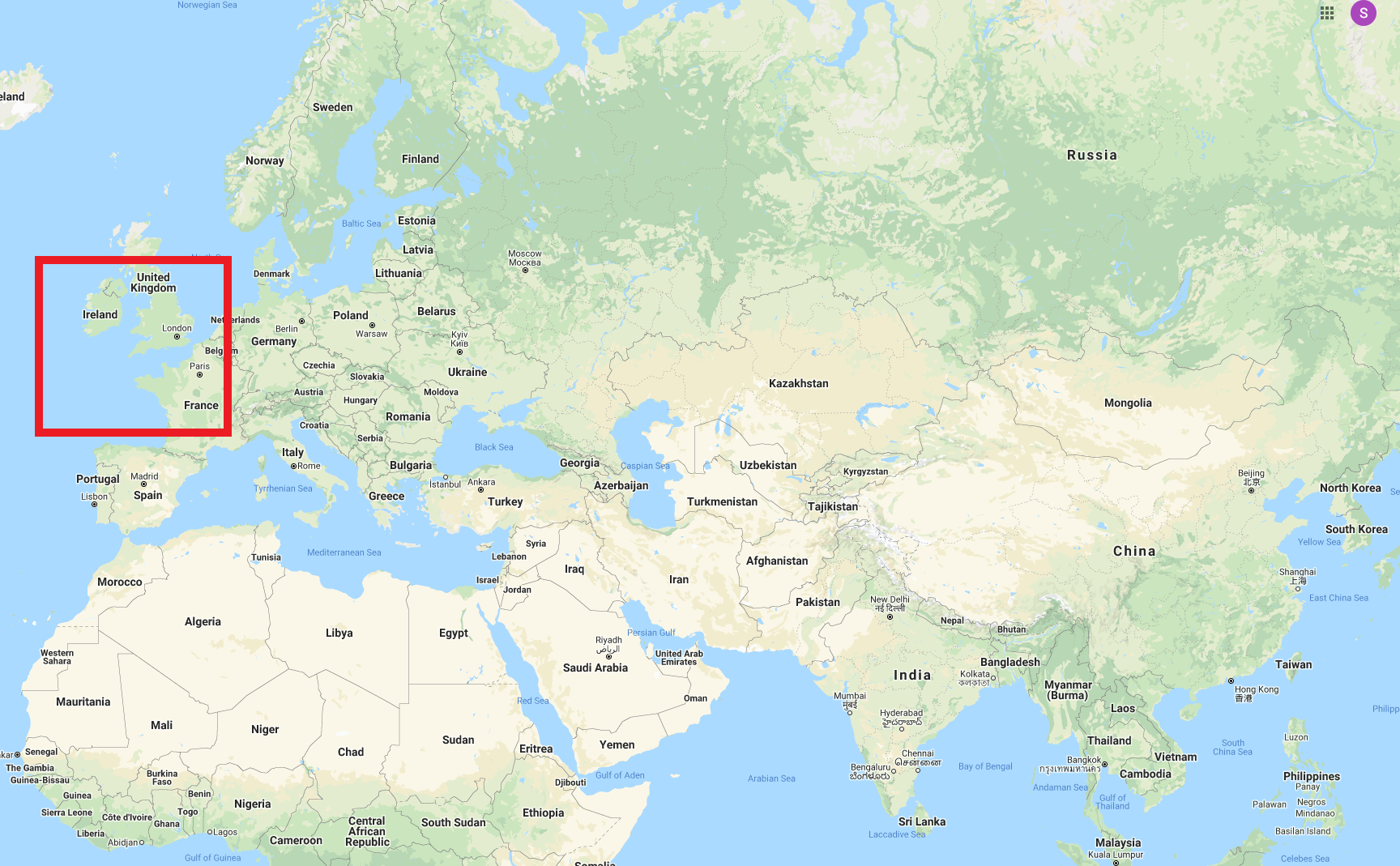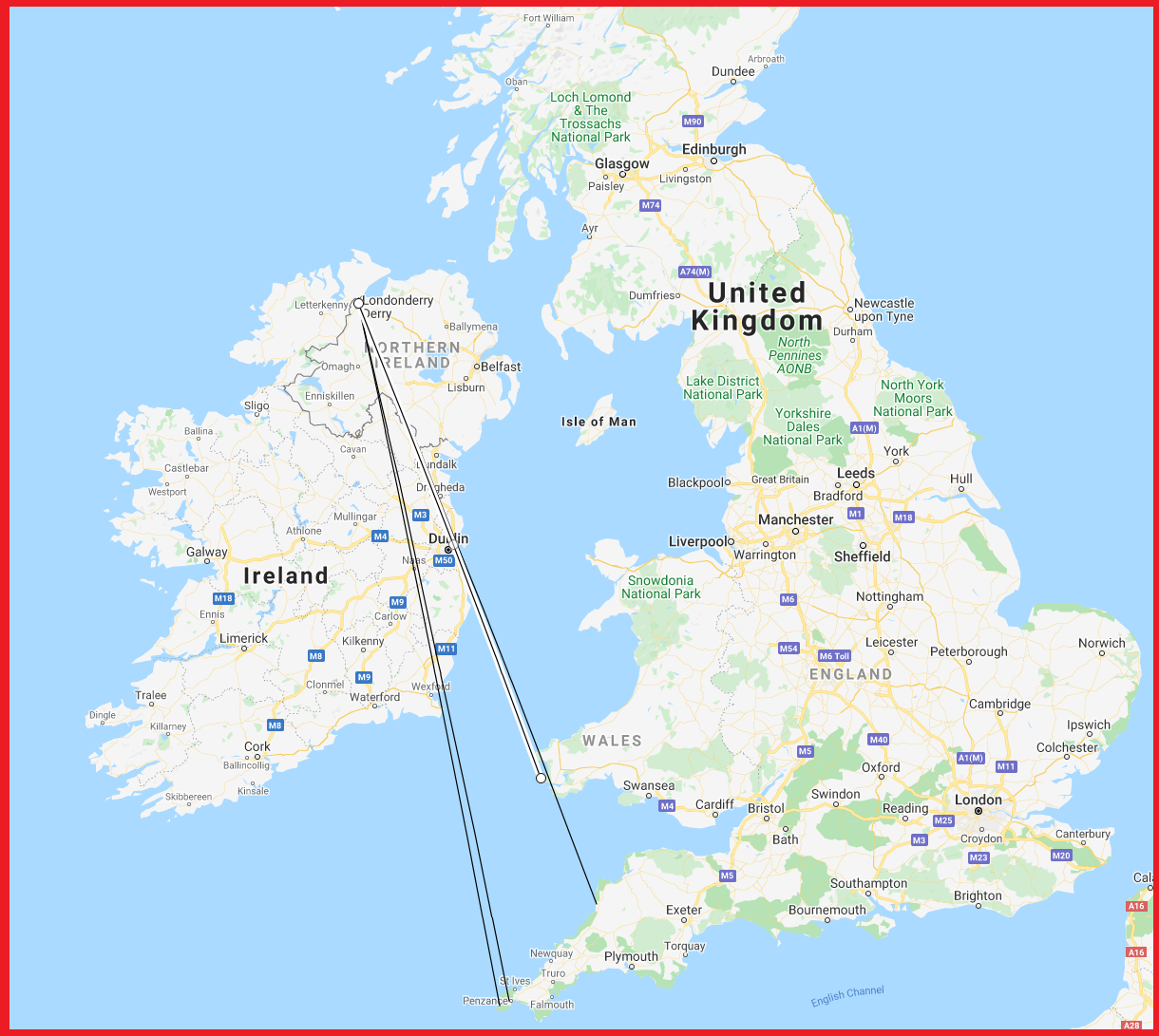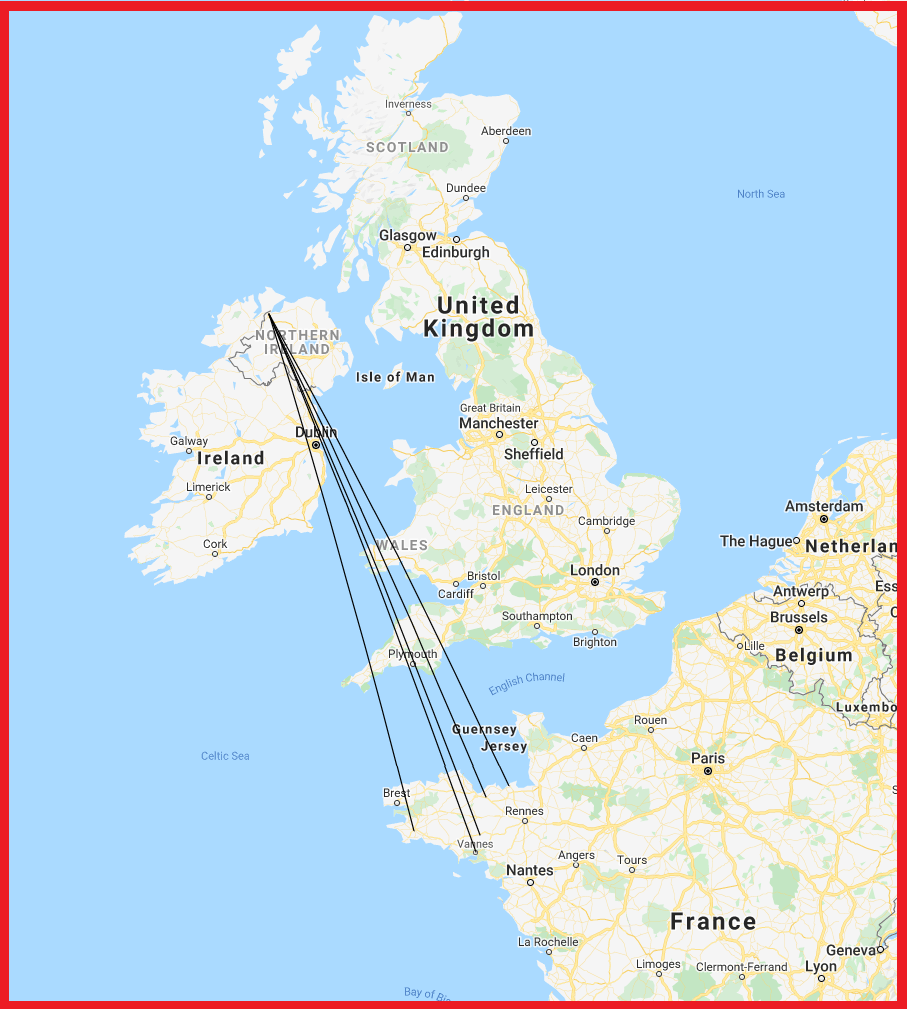Frans & Marcel Van Den Brande
The Van Den Brande Brothers, Master Breeders & Racers.
- Steve O'Dea
- January 13, 2022
- 11:38 pm
Watch, Listen or Read about Frans & Marcel Van den Brande Pigeons below here....
Berlaar is a little town in the South East of the province of Antwerp. Many people claim that the best sprint birds in Belgium are to be found in the Berlaar area. The brothers Janssens, whom are regarded as the most famous pigeon fanciers of all time, received some of their stock from the Berlaar region. Competition is so rife within this region that from the same race, the speed of a 1st prize winner in a neighbouring combine is not good enough to win a decent prize in Berlaar.
Many people believe that Charles Meulemans, from Arendonk, was the owner of the best breeding pair ever; known as the “Golden Couple”. The Cock of this pair came from a well-known fancier in the Berlaar region, known as Jos Van Den Bosch. One of the “sprint champions” of recent years are Bros Van Den Brande
The Brothers Frans and Marcel Van Den Brande are quite old-school in their approach to pigeon racing. They don’t darken their babies and they are of the very few that still race ‘natural’. The floor of the loft is covered with straw, not the more popular bean-straw or pea-straw, simply straw. Once the straw becomes dirty, rather than replacing it, they simply put a new layer of straw on top of it.
There is a reason why the Bros Van Den Brande aren’t as well known as other “kings of sprint” such as Sticker Donckers or Boeckx. This is largely down to the fact that the Bros Van Den Brande don’t chase popularity within the sport. The have simple pedigrees, their birds are not of famous origin, and they do not have National Aces.
The reason is they race in a combine (Diamantverbond) with few birds in competition. The races they continuously win might only be against 70 other birds, but the winner will have had a higher speed than the winner in surrounding combines with 1,500 birds in competition or more. Those 70 birds are entered by many fanciers and thus we may have competitions as the following – In one combine 40 fanciers enter 70 pigeons. (They enter 1, 2 or 3 birds, only their very best, since they race for money). – In another combine 5 fanciers enter 700 birds. It stands to reason in which combine competition is strongest. It is about the quality of opposition not the quantity.
Diamantverbond
Of the three first prizes that they won in the 1st month of the 2018 season, two were claimed in the renowned Diamandverbond Union. This union, named after the region that was once home to a flourishing diamond industry, is still the leading competition in the sprint, with the best sprint fanciers competing against each other every week.
These fanciers work hard every week to earn as much prize money as they can. Fanciers are known to basket only their very best birds, and those that fail to deliver several weeks in a row will inevitably be left out. The number of competing pigeons decreases significantly every week due to this fierce competition. As a result, pigeons that would initially win prizes per ten with ease, suddenly fail to win a prize per 3, and these kind of pigeons usually have no place in the racing team in Berlaar.
It is in this prestigious union, where only the very best fanciers stand out, that the brothers Marcel and Frans Van den Brande have been top performers for years.
General Champion
The Diamantverbond Union awarded a title of General Champion Quievrain and Noyon for the first time in 2014. The winners of 2014 were the Van den Brande Brothers. They finished in 2nd place in 2015, before claiming another championship title in 2016 and another second place in 2017.
They have repeatedly outperformed their opponents at club level as well, winning the title of general champion in the club 12 times in 18 seasons. They finished in 2nd place in the remaining 6 seasons. They basketed pigeons in Bevel (along the Nete river) for the first time in 2017, and they became 1st General Champion Quievrain and Noyon here as well.
Among the stars that have won so many great results in recent seasons are De Diamant, Blauwe 213, Super Blauwe 401, De Piraat, De Kapitein and Blauwe 512.
Diamant (BE14-6115421)
Diamant was an exceptional racing bird with 8 first prizes (no doubles) to his name: 1st Quievrain against 221 pigeons, 1st Quievrain against 186 pigeons, 1st Quievrain against 186 pigeons, 1st Quievrain against 76 pigeons, 1st Quievrain against 200 pigeons, 1st Quievrain against 76 pigeons, and 1st Quievrain against 106 pigeons.
He also won 2nd against 274 pigeons, 2nd against 1086 pigeons, 7th against 863 pigeons and 44 prizes in total, including mostly prizes per ten. These results led to a title of 4th ace pigeon YBs Quievrain 2014, 3rd ace pigeon YLs Quievrain 2015 in the Diamantverbond Union, and 1st ace pigeon Quievrain in Bevel 2017.
He is now the sire of the “730 against 17”, a talented pigeon that claimed 10th against 380 pigeons and 27th against 717 pigeons. The sire of Diamant became 1st ace pigeon Quievrain in the Diamantverbond union in 2014, and his grandparents were excellent racing birds as well: 2nd against 187, 5th against 143, 5th against 254, 5th against 2,224, 20th against 922, 24th against 1,740, always from Quievrain.
 “ It is in this prestigious union, where only the very best fanciers stand out, that the brothers Marcel and Frans Van den Brande have been top performers for years. ”
“ It is in this prestigious union, where only the very best fanciers stand out, that the brothers Marcel and Frans Van den Brande have been top performers for years. ”
Blauwe 213 (BE12-6054213)
This was one of the best pigeons ever in the collection of the two brothers: it won 9 first prizes, including two wins from Quievrain (1st against 638 pigeons and 1st against 772 pigeons), and seven first prizes from Noyon (1st against 142, 1st against 64, 1st against 13, 1st against 81, 1st against 78, 1st against 43, 1st against 27), making him the fastest sprint bird in the province of Antwerp several times. His hard work earned him the title of 1st Ace Pigeon Noyon YLs Berlaar and 1st Ace Pigeon Noyon Old birds Diamantverbond in 2013 and 2015 respectively. He finished in 2nd place both in the club and in the Diamantverbond union in 2014.
His grandfather and grandmother from his father’s side were great racing birds also, together they won a 1st Quievrain against 103 pigeons, 1st Quievrain against 79 pigeons, 1st Quievrain against 444 pigeons and 1st Quievrain against 388 pigeons.
Blauwe 213 is proving to be a talented breeding bird as well, with such talented descendants as ‘Sagan’ (BE 15 6 1 0 6 5 3 1), ‘772/17’ and ‘771/17’. The 772/17 won an 11th against 717 pigeons in Quievrain as a young bird, and his nest mate 771/17 has been quite successful as well, claiming an 11th against 284 pigeons, 6th against 244 pigeons, 8th against 132 pigeons, 9th against 494 pigeons and 14th against 302 pigeons, all in Quievrain. Sagan claimed top results both in Quievrain and Noyon but he was particularly successful in Noyon:
1st Quievrain against 315 pigeons, 1st Noyon against 425 pigeons, 2nd Quievrain against 353 pigeons, 2nd Noyon against 68 pigeons, 5th Noyon against 140 pigeons, 5th Noyon against 68 pigeons, 5th Noyon against 46 pigeons (no doubles), 8th Noyon against 396 pigeons, 9th Noyon against 368 pigeons and 10th Noyon against 984 pigeons.
Super Blauwe 401 (BE 14 6 1 1 5 4 0 1)
Super Blauwe 401 was 1st Ace Pigeon Noyon YLs 2015 and 1st Ace Pigeon Noyon Old birds 2016 in the Diamantverbond Union. He wins 3 first prizes in his racing career: 1st Noyon against 155 pigeons, 1st Noyon against 150 pigeons, and 1st Noyon against 134 pigeons. He also claimed an additional 2nd prize, 3 third prizes, 2 fourth prizes and a 5th and 6th from the same release site. He was successful in Quievrain as well, winning a 3rd against 126 pigeons and a 4th against 349 pigeons. Super Blauwe 401 is now the sire of Blauwe 512.
Blauwe 512 (BE15-6106512)
This is a superstar for team Van den Brande. Blauwe 512 became 2nd Ace Pigeon Quievrain YLs and 1st Ace Pigeon Quievrain Old birds Diamantverbond Union in 2017. He wins 7 top 5 prizes overall:
1st Quievrain against 282 pigeons, 1st Quievrain against 202 pigeons, 2nd Quievrain against 261 pigeons, 3rd Quievrain against 429 pigeons, 3rd Quievrain against 264 pigeons, 4th Quievrain against 146 pigeons, and 4th Quievrain against 71 pigeons.
Blauwe 512 is now the sire of a first prize winner from Quievrain against 669 pigeons. The sire of Blauwe 512 is Super Blauwe 401, the dam is Sneeuwwitje 307/19. This Sneeuwwitje is a daughter of Blauwe Aerts 696/12, which is also the sire of such renowned birds as Piraat and Kapitein.
Piraat (BE 14 6 1 1 5 4 6 9)
De Piraat is yet another ace pigeon winner in team Van den Brande: he was 2nd Ace Pigeon YLs Quievrain with a 1st against 444 pigeons and a 1st against 377 pigeons. The dam of Piraat is Het Vaal, winner of a 1st of 745 pigeons. The dam was a great racing bird, and so was Piraat’s grandfather from his mother’s side: he claimed a 1st Quievrain against 3,734 pigeons.
Kapitein (BE15-6106502)
Kapitein is a full brother of Piraat, and he inherited not only his dam’s pale colour but also her sprint qualities. However, the brothers were not convinced of his potential initially. He did not have a great start with a 373rd against 1193 pigeons and a 570th against 1,997 pigeons, but Kapitein then decided his run-in period was done, and he started to really excel, winning a consecutive 29th against 893 pigeons, 4th against 256 pigeons, and 4th against 590 pigeons. He became 1st Ace Pigeon Quievrain YLs in the Diamantverbond Union in 2016, based on the following results:
1st Quievrain against 264 pigeons, 1st Quievrain against 45 pigeons, 1st Quievrain against 40 pigeons, 2nd Quievrain against 353 pigeons, 3rd Quievrain against 261 pigeons and 3rd Quievrain 202 pigeons.
 “ Frans and Marcel have completed just one shorter middle–distance race in their long career, and it was quite a successful event. It’s safe to assume their opponents were relieved to hear it was just a one-time experiment. ”
“ Frans and Marcel have completed just one shorter middle–distance race in their long career, and it was quite a successful event. It’s safe to assume their opponents were relieved to hear it was just a one-time experiment. ”
Cruyff (BE 17 – 6 0 8 27 1 4) and Ronaldo (BE 17 – 6 0 8 2 70 7)
Cruyff and Ronaldo appear to be the leading names for 2018. Cruyff, a promising young bird, already won 4 first prizes and a second prize:
1st Quievrain against 125 pigeons, 1st Quievrain against 717 pigeons, 1st Quievrain 444 against pigeons, 1st Quievrain against 121 pigeons and 2nd Quievrain against 203 pigeons.
And he was off to a flying start in 2018 as well:
1st Quievrain against 326 pigeons and 1st Quievrain against 196 pigeons.
The sire of Cruyff became 1st Ace Pigeon Noyon YLs in Bevel in 2017, and his grandfather from his father’s side was 1st Ace Pigeon YLs Quievrain 2015 in the Diamantverbond.
Ronaldo comes from some talented bloodlines as well: his sire was 1st Ace Pigeon Quievrain old birds 2014 in the Diamantverbond, and both his grandfather and grandmother from his father’s side were renowned racing birds. The grandfather from his mother’s side is none other than Piraat, which we introduced earlier on. Ronaldo ended the 2017 season with a 7th against 160, 12th against 349 and 1st against 481, and he has had a great start in 2018 as well, winning a 2nd Quievrain against 326 pigeons, a 2nd Noyon against 313 pigeons and a 20th Noyon against 578 pigeons.
Frans and Marcel have completed just one shorter middle-distance race in their long career, and it was quite a successful event. It’s safe to assume their opponents were relieved to hear it was just a one-time experiment.
However, The Van den Brande racing birds have shown their potential in the longer distances in other lofts: one team that did particularly well with the Van den Brande breed is the Leideman Brothers and their Goed Grijs. This fantastic racing hen, that has the same grandmother as the talented Cruyff, has won 7 first prizes in her racing career, each time in an important race:
1st N P O Laon against 6,371 pigeons, 1st Duffel against 5,821 pigeons, 1st Laon against 1,502 pigeons, 1st Wijchen against 786 pigeons, 1st Heusden-Zolder against 656 pigeons, and 1st Hapert against 231 pigeons.
Pigeon fancier Pasha from Romania has done really well with his Van den Brande investments, winning a 1st National Ace Pigeon title long distance YBs 2016. The Leideman brothers and Pasha are in fact not the only fanciers that did great with the Van den Brande breed; so were Gaston Van de Wouwer, Roger Maris, Alex Docx, Jo Van den Brande, Ludo Helsen, and Laurent Serneels.
These renowned fanciers are well aware of the abilities of their Blauwe 213 descendants and other talented birds. In The Netherlands, the Jager Brothers, the Van Brandenburg Brothers, Sibble Bros and Jan Van der Putten all have been able to raise the bar thanks to the relatives of Piraat, Kapitein, Super Blauwe 401, and Blauwe 512.
2018 proved to be the last year racing for the Van Den Brande bros and they decided to have a clearance sale, PIPA conducted and presented to the world a superb sale of all the birds of Frans and Marcel Van Den Brande.
So widely respected are the birds from Frans and Marcel Van Den Brande that at their clearance sale through PIPA, Hans and Evert Jan Eijerkamp bought two of the star hens ‘Diamant’ and her sister “Sister Diamant” as the foundation hens to breed to the very best of their Herman Ceuster cocks to produce in their words “a new super breed of Sprinters”
 “ Van Den Brande is a modern strain that is destined for continued greatness around the world. ”
“ Van Den Brande is a modern strain that is destined for continued greatness around the world. ”
Van den Brande birds are not as well-known as many of the regions superstar sprinters. Their birds however appear many times in the back breeding of these superstar lofts. Frans and Marcel never courted the limelight, they are private men who enjoyed racing pigeons at the very highest level against the toughest opposition.
For years the Van Den Brande birds have been a very successful breed in the UK and Ireland, they have not been commercially pushed as others have, but those who have them in their lofts tend to remain fiercely loyal to these birds that are powerful fast sprinters, which are now proving to be a competitive middle distant bird and also capable of flying across the water, as is being proven by lofts in Ireland.
Another recent success for these birds came from Jos Van Den Brande at the medium-distance classic Bourges ,477 kilometres, in 2017. The short and medium-distance player Jos Van Den Brande from Heultje (Westerlo) in the province of Antwerp won the 3rd national course against 38,456 youngsters. This was also the 3rd fastest of 59,243 pigeons. Furthermore, Jos Van Den Brande also won the 13th National against 38,456 youngsters only with little used pigeons.
Jos Van Den Brande has been racing extremely well on the short and medium haul for many years and is a real star in his area. In the old and yearlings, Jos only races with the cocks. With the young birds racing both cocks and hens. The hens are then also basketed on the national flights of the medium-haul route.
Its base comes from the Van Den Brande brothers and his friend Henri Menten, where pigeons are regularly exchanged or bred together.
After Jos Van Den Brande had another top year in 2018 with the 8th national AS pigeon K B D B young pigeons small middle distance B 18 – 6 2 0 0 5 3 4.
The absolute highlight in 2019 was his long successful career with the title 1st national champion K B D B small middle distance Youngsters 2019 and 4th national AS-pigeon K B D B small middle distance youngsters 2019 with the female B 19 – 6 1 4 0 4 3 4 !
Van Den Brande is a modern strain that is destined for continued greatness around the world.


